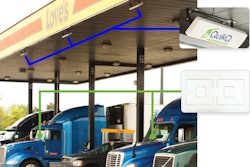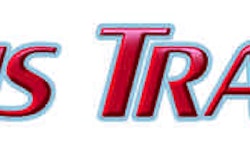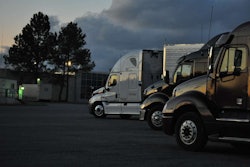
Chances are, you already have the technology to do the same. Consider the satellite tracking in smart phones and onboard computers. With the software that is in your cabs, in your office and running in the various “cloud-based” services you use, you have everything you need for a conclusive electronic “proof of delivery.”
But unlike UPS or FedEx, you still have to include bills of lading and other documents in your billing process. Why?
The easy explanation is because that’s what shippers require in order to pay on invoices. A more complicated explanation is that the transportation industry is fragmented and diverse. UPS and FedEx have the lion’s share of the parcel market and can set their own standards. Shippers can require truckload and less than truckload (LTL) carriers to use paper proof-of-delivery documents to create a uniform standard for submitting invoices, even if carriers have the technology to go electronic.
You also can’t ignore the fact that requiring a paper trail buys the shipper more time to pay freight bills.
Fortunately, all delivery documents can be converted quickly to electronic images. This conversion can reduce the time it takes to present customers with everything they need to pay an invoice on the same day, or even the day after, completing a load. Today, the options for electronic capture include using fixed scan stations located at office terminals and truck stops or mobile scanning. Mobile scanning is the fastest growing of them all.
One of the most important considerations for mobile scanning is to ensure that the quality and format of the images is the same. A driver could simply take a picture of a signed bill of lading with his smart phone. With a few screen taps he could send an e-mail to your office with the picture attached. You might encounter a problem with image quality, however.
Getting the driver to take another picture wastes time. In the worst case scenario, sending a bad image to the customer might result in rejecting the image and delaying payment.
Pegasus TransTech has an app, Transflo Mobile, for the iPhone and Android platforms. The app utilizes the phones’ camera and e-mail features to capture images. After taking a picture of a document, the app crops the image around the paper. It also enhances the image quality and compresses it for transmission.
“We do that all on the phone,” says Bob Helms, chief executive of Pegasus TransTech. “When taking a picture, the app does all of the processing and presents an image back to the driver to see what he is about to transmit.”
ACS, a Xerox Company, is seeing the fastest growth in its in-cab scanning system, which it offers through a partnership with PeopleNet on its BLU platform as well as an in-cab scanning system for laptops. TripPak Mobile, an app for the iPhone and Android platforms, is growing quickly and will likely surpass the volume of images captured by in-cab scanning at some point, says Steve Sichterman, vice president of capture and submission solutions for ACS.
TripPak Mobile includes a feature that automatically scores the quality of the image. Customers can set their own thresholds for what score they will allow. Drivers will get an alert on the device if they need to re-scan or take a new picture of the image. “It tells the driver right away,” he says. “They also see an image of the document before they send it.”
While the transportation industry is getting closer to a fully electronic proof-of-delivery process, using mobile scanning systems to capture images has already closed the gap on any efficiency that could be gained.












